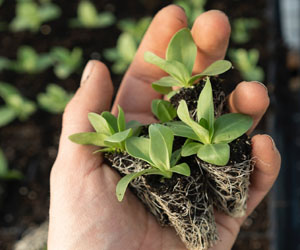


Navigating A Changing World

Our planet is undergoing a profound transformation as it grapples with a multitude of environmental challenges. These challenges, driven by human activities and natural processes, pose significant threats to the delicate balance of the Earth's ecosystems and the well-being of its inhabitants. This article explores some of the most pressing environmental challenges we face today.
1. Climate Change
Climate change, primarily driven by the emission of greenhouse gases such as carbon dioxide and methane, is arguably the most urgent environmental challenge. It results in rising global temperatures, melting glaciers, sea-level rise, and an increase in the frequency and severity of extreme weather events. Climate change has far-reaching impacts on agriculture, water resources, biodiversity, and human societies, with vulnerable communities often bearing the brunt of its consequences.
2. Biodiversity Loss
The loss of biodiversity is a global crisis with ramifications for ecosystems and human well-being. Habitat destruction, pollution, overfishing, and invasive species all contribute to the decline of species and ecosystems. The loss of biodiversity threatens food security, disrupts ecosystems' ability to adapt to environmental changes, and compromises the availability of life-saving medicines derived from nature.
3. Air And Water Pollution
Air and water pollution continue to affect the quality of our environment and public health. Pollutants released from industrial activities, transportation, and agriculture contribute to air pollution, leading to respiratory diseases and other health issues. Water pollution, often caused by untreated sewage, agricultural runoff, and industrial discharges, contaminates water sources, harming aquatic ecosystems and endangering drinking water quality.
4. Deforestation
Deforestation, primarily driven by agricultural expansion, urbanization, and illegal logging, results in the loss of vital forests worldwide. Forests play a critical role in sequestering carbon, preserving biodiversity, and regulating local and global climates. The loss of forests contributes to carbon emissions, soil degradation, and the disruption of countless ecosystems.
5. Plastic Pollution
Plastic pollution has become a global environmental menace. Single-use plastics and microplastics now pervade land, air, and water environments, causing harm to wildlife and ecosystems. Reducing plastic consumption and improving waste management systems are critical steps in mitigating this crisis.
6. Resource Depletion
The unsustainable extraction and use of natural resources, including minerals, fossil fuels, and freshwater, strain the Earth's capacity to replenish these valuable assets. Over-exploitation of resources has profound consequences, from energy security concerns to the depletion of aquifers and mineral reserves.
7. Urbanization And Land Use Change
Urbanization and land use change result in the conversion of natural landscapes into built environments. This transformation can lead to habitat loss, increased impervious surfaces, and disruptions to local ecosystems, often at the expense of biodiversity and ecosystem services.
Addressing Environmental Challenges
Addressing environmental challenges is a complex and urgent endeavor that requires a multifaceted approach:
Mitigation And Adaptation: We must reduce greenhouse gas emissions to mitigate climate change and adapt to its effects. This includes transitioning to renewable energy sources and enhancing climate resilience.
Conservation Efforts: Protecting and restoring natural habitats is vital for biodiversity conservation. National parks, marine reserves, and other protected areas play a crucial role.
Sustainable Practices: Embracing sustainable agriculture, forestry, and fisheries can help address resource depletion and reduce the environmental impact of human activities.
Environmental Education: Raising public awareness about these challenges and fostering an understanding of the importance of conservation is essential for driving change.
Policy And Regulation: Governments and international bodies play a pivotal role in enacting and enforcing policies and regulations that promote environmental protection.
Environmental challenges are deeply interconnected and require a collective global effort to address. By understanding the complexity of these issues and actively participating in solutions, we can strive to create a more sustainable and balanced world for current and future generations.
Nurturing Sustainable And Efficient Agriculture
 The Principle Of Wicking Systems
The Principle Of Wicking Systems
The key principle behind wicking systems is the movement of water through porous materials, like soil or a specialized wicking fabric, from areas of high water concentration (the reservoir) to areas of lower water concentration (the root zone). This capillary action ensures a consistent and controlled water supply to the plants, making wicking systems highly efficient.
Advantages Of Wicking Systems
Water Efficiency: Wicking systems significantly reduce water wastage by providing moisture directly to the root zone. This targeted irrigation minimizes evaporation and runoff.
Reduced Labor: Once set up, wicking systems require minimal maintenance and are well-suited for urban gardens, container gardening, and raised beds, making them an excellent choice for those with limited time or space.
Improved Plant Health: Consistent moisture levels contribute to healthier and more robust plant growth. These systems help prevent overwatering, which can lead to root rot and other water-related plant diseases.
Drought Resilience: Wicking systems can conserve water and sustain plants during dry spells, making them a valuable tool in regions prone to drought.






Creating A Beautiful And Thriving Garden
 Assess Your Garden Conditions: Before you begin selecting plants, it's essential to assess your garden's conditions. Consider factors like sunlight, soil type, moisture levels, and climate. Some plants thrive in full sun, while others prefer shade. Some can tolerate dry conditions, while others need consistently moist soil. Understanding your garden's unique environment is the first step in making informed plant selections.
Assess Your Garden Conditions: Before you begin selecting plants, it's essential to assess your garden's conditions. Consider factors like sunlight, soil type, moisture levels, and climate. Some plants thrive in full sun, while others prefer shade. Some can tolerate dry conditions, while others need consistently moist soil. Understanding your garden's unique environment is the first step in making informed plant selections.
Define Your Garden's Purpose: What do you want to achieve with your garden? Are you looking to create a lush, private retreat, or do you aim to grow a bountiful vegetable garden? The purpose of your garden will greatly influence your plant selection. For example, a meditation garden may focus on fragrant and low-maintenance plants, while a vegetable garden will prioritize edible crops.
Choose Plants That Thrive In Your Climate: Plants that are native or well-suited to your climate are more likely to thrive. Native plants are adapted to the local conditions and require less maintenance. They also support local wildlife and pollinators.
Consider Growth Patterns: When selecting plants, consider their growth habits. Some plants are compact and tidy, while others can be sprawling or invasive. Be mindful of how each plant will fit into your garden's design and its potential impact on nearby plants.
Balance Aesthetics: Think about the visual appeal of your garden. Balance is essential. Choose a variety of plants that offer different colors, textures, and heights. Create focal points and consider how the plants will look in different seasons, ensuring your garden remains visually appealing year-round.
A Cleaner Home And Healthier Planet
 2. Create Your Homemade Cleaning Solutions
2. Create Your Homemade Cleaning Solutions
Another excellent recommendation is to make your own green cleaning solutions using readily available household ingredients. Common items like white vinegar, baking soda, lemon juice, and essential oils can effectively clean a wide range of surfaces and provide a fresh, natural scent. You can mix these ingredients to create all-purpose cleaners, window cleaners, and even disinfectants.
3. Prioritize Reusable Cleaning Tools
Invest in high-quality, reusable cleaning tools such as microfiber cloths, mop heads, scrub brushes, and dusters. These tools are not only efficient at capturing dirt and dust, but they also eliminate the need for disposable cleaning supplies. By opting for reusable tools, you can significantly reduce waste and contribute to a cleaner planet.
4. Embrace Energy-Efficient Cleaning Appliances
When it's time to replace your cleaning appliances, consider investing in energy-efficient models. Energy-efficient vacuum cleaners, steam cleaners, and other cleaning appliances not only save you money on energy bills but also reduce your overall energy consumption, which is better for the environment.
5. Practice Water Conservation
Water is a precious resource, and green cleaning recommendations also include water conservation. When cleaning, be mindful of the amount of water you use. Opt for water-saving practices such as using a bucket for mopping rather than letting the water run continuously.
Turning Scraps Into Garden Gold
 Suppresses Plant Diseases: Compost contains beneficial microorganisms that can help prevent soil-borne diseases and reduce the need for chemical pesticides.
Suppresses Plant Diseases: Compost contains beneficial microorganisms that can help prevent soil-borne diseases and reduce the need for chemical pesticides.
Reduces Waste: Composting diverts kitchen and yard waste from landfills, reducing the production of harmful methane gas and lessening the burden on waste disposal systems.
Getting Started With Composting
Select A Composting Location: Choose a suitable spot in your garden or yard for your compost bin or pile. It should be well-drained and accessible for regular turning.
Collect Compostable Materials: Gather kitchen scraps (fruit and vegetable peels, coffee grounds, eggshells), yard waste (leaves, grass clippings, small branches), and other organic materials (paper, cardboard). Avoid meat, dairy, and diseased plants, as these can attract pests and pathogens.
Layer The Materials: Alternate between green (nitrogen-rich) and brown (carbon-rich) materials in your compost pile. This balance provides the right C:N ratio (carbon to nitrogen) for efficient decomposition.
Aerate And Turn: Regularly turn your compost pile with a pitchfork or aeration tool to introduce oxygen and promote decomposition. A well-aerated pile minimizes unpleasant odors and speeds up the composting process.
Maintain Moisture: Keep your compost pile moist but not waterlogged. If it becomes too dry, it won't decompose effectively. If it's too wet, it can become smelly and anaerobic.
Monitor Temperature: A well-working compost pile will generate heat as microorganisms break down the organic matter. This is a sign that your compost is active and efficient.
Nurturing A Sustainable Tomorrow
 Reduce, Reuse, Recycle: The famous "Three R's" serve as the foundation of eco-conscious living. Reducing waste through mindful consumption, reusing items when possible, and recycling materials are essential practices that help divert waste from landfills and conserve valuable resources.
Reduce, Reuse, Recycle: The famous "Three R's" serve as the foundation of eco-conscious living. Reducing waste through mindful consumption, reusing items when possible, and recycling materials are essential practices that help divert waste from landfills and conserve valuable resources.
Energy Efficiency: Reducing energy consumption not only saves money but also reduces greenhouse gas emissions. Simple steps like using energy-efficient appliances, sealing drafts in homes, and turning off lights and electronics when not in use can make a significant difference.
Sustainable Transportation: Opting for eco-friendly modes of transportation, such as biking, carpooling, or using public transit, can help reduce air pollution and the carbon footprint associated with personal travel.
Mindful Consumption: Eco-conscious individuals make deliberate choices when it comes to the products they buy. They prioritize environmentally friendly and sustainably sourced goods, supporting companies that adhere to eco-conscious principles.
Conservation Of Water: Water is a finite resource, and eco-conscious living encourages water conservation through efficient fixtures, rainwater harvesting, and responsible water use practices.
Local And Organic Foods: Supporting local and organic food production not only reduces the carbon footprint associated with food transportation but also promotes healthier eating and sustainable agriculture.
Eco-Friendly Energy: Harnessing renewable energy sources, such as solar panels and wind turbines, is a significant aspect of eco-conscious living. It reduces reliance on fossil fuels and lowers energy costs.